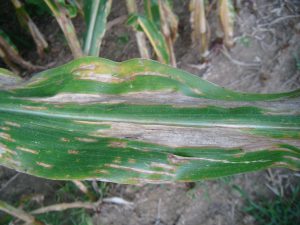
When you have a stand failure, many things may be to blame, including human error, mechanical error, seed problems and poor weather conditions. While helping our customers diagnose poor stands this spring, we developed a checklist that can be used in future planting seasons to help you understand what went wrong. If you purchased seed from us, your rep can help you answer these questions and determine whether you’re eligible for discounted seed to replant.
- Write down background information:
- What were previous crops in the field?
- What herbicides were applied (if any)? Long herbicide residual times may be damaging the crop.
- Are soil tests available? These can reveal if nutrient deficiencies are to blame.
- What was the planting date? You may have planted too late or early.
- What was the seed depth planted? Planting too deep or shallow for the seed size can ruin emergence and establishment.
- What seeding rate was used? (or what population count?) You may not have planted enough seed, or you may find that emergence was poor even if you planted enough.
- What field prep activities took place and when? Things like cultipacking can be essential to prepare the soil, especially in a dry year.
- What soil amendments were used (i.e. manure, fertilizer, biologicals) with what timing, placement, and rates?
- What were the weather conditions? (Current and previous 3 weeks)
- Active temp ranges are helpful. Was it hot? Cold?
- Did we have rain? How much?
- Any presence of insects? Look on the undersides of leaves, and at various spots throughout the field.
- Any signs of disease? Again, look carefully at the whole plant and sample different parts of the field.
- Any signs of discoloration or stunting with no signs of insect or disease presence?
- If so, it could be a nutrient deficiency or herbicide damage.
- Look for any repeating patterns. Are there any that might match planter, tillage or applicator widths?
- Are there differences in different parts of the field? What about field changes? (Soil type/texture, elevation, drainage, etc.)
- Evaluate the field for low points or high points within the planter passes to check for differences.
- If most of the field is poor, but the low points are good, seed was probably planted too deep.
- If the high points look good, seed was probably planted too shallow.
- What was your expected outcome when choosing the product to start with? Was it for forage, grain, bedding, etc? This information can help your seed rep or consultant determine how to proceed with an alternative options that will best suit your needs.
- What was the original rotation planned to follow this crop? This should also give the rep direction on recommendations.
- Photographs are helpful to share with your rep to assist with diagnosis.
- Take a few general field photos for perspective.
- Take a few close up photos with a reference item for size comparison (ruler, pen, knife, coin, dollar bill, etc.).
Speak to an expert at King’s AgriSeeds now at 1-717-687-6224 or email us at [email protected].
